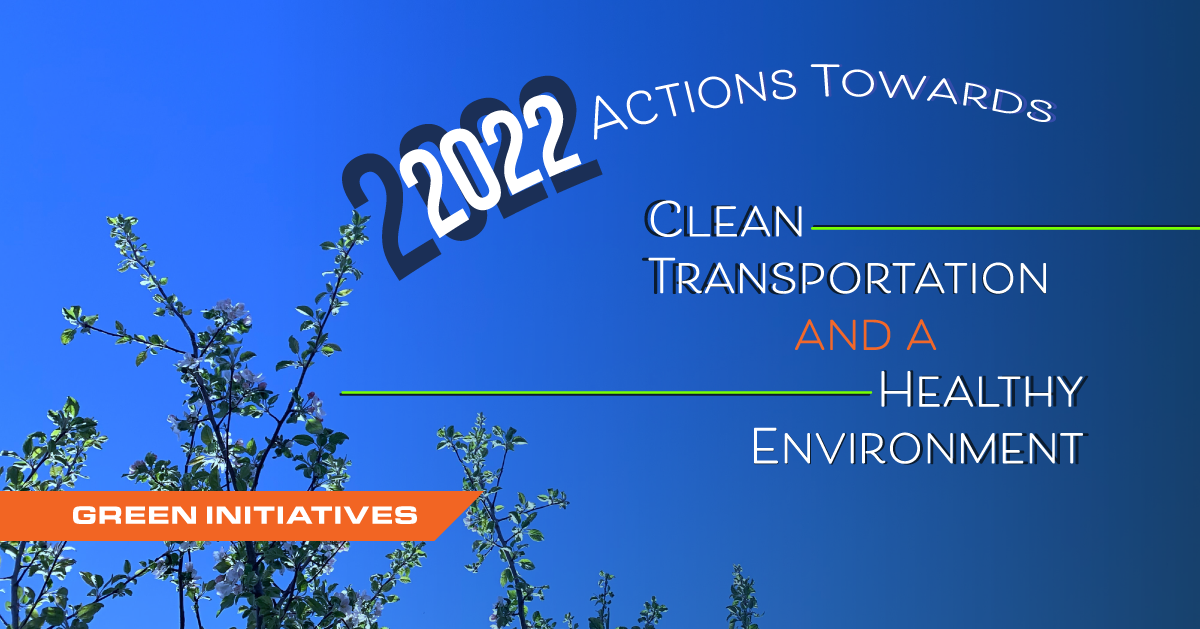New Legislation Prioritizing the Environment and Clean Transportation
If you pay attention to the news, you know that the scientific community recently issued several dire warnings about how little time we have left to avoid the worst impacts of climate change. Thankfully, many of our federal, state and local representatives have taken action, passing historic measures that outline a path to saving our planet. Here’s a deeper look at four resolutions we’re excited to see passed and enacted:
Carbon Neutral Goals for Baltimore City
On Friday, April 22, 2022, Baltimore Mayor Brandon Scott signed a bill into law that directs the city government to reach full carbon neutrality by 2045. The law’s benchmarks include a 30% reduction in carbon emissions by 2025, a 60% reduction in emissions by 2030, based on 2007 levels. Ultimately, the goal is to reach a 100% reduction in net emissions by 2045. As of 2017, the City had already reduced emissions by 13% (based on 2007 levels), and has made substantial headway on the 2021 Climate Action Plan.
USDOT Helping States Reduce Carbon Emissions
On Thursday, April 21, 2022, The U.S. Department of Transportation announced the launch of the new Carbon Reduction Program (CRP) that unlocks $6.4 billion in formula funding for states and localities. The CRP aims to fund a variety of projects that largely focus on reducing carbon dioxide emissions from highways. Deputy Federal Highway Administrator Stephanie Pollack says “This new program provides states and local agencies in both urban and rural areas the flexibility and funding needed to reduce emissions and build a more sustainable transportation network that will benefit all travelers.” Learn more about the details of CRP here.
FRA Climate Challenge
Last week on Earth Day, the Federal Rail Administration (FRA) announced their rail industry Climate Challenge, which invites stakeholders in rail network and manufacturing to commit to a goal of net-zero greenhouse gas emissions by 2050. Their announcement includes some interesting statistics, including that “passenger rail is up to 46% more efficient than driving and 34% more efficient than flying.” Moreover, the FRA calls upon the rail industry to “decarbonize their operations, which will ensure that rail continues to be a model of sustainability and resiliency well into the future.” We are proud that sustainability is embedded into the nature of maglev technology, and are encouraged by commitments from other stakeholders in the rail industry to contribute to the net-zero goal.
Maryland Climate Solutions Now Act
The Maryland State Legislature passed the historic Climate Solutions Now Act of 2022 in late March, which establishes a net-zero statewide greenhouse gas emissions goal. Similar to Baltimore City’s new law, the legislation includes benchmarks to measure greenhouse gas emission reduction, and mandates a variety of efforts, such as movement toward electric state-owned vehicles, and financial incentives toward the construction of net-zero school buildings. Read through the entire bill here.
We’re looking forward to seeing what innovations are in store in the transportation sector; we’re passionate about both reducing emissions and building a sustainable public transport ecosystem. According to the U.S. EPA, greenhouse gas emissions from transportation accounts for about 27% of total U.S. greenhouse gas emissions, making it the largest contributor of U.S. greenhouse gas emissions. Innovation in transportation is imperative in reducing greenhouse gas emissions and ensuring the preservation of our environment. Implementing the SCMAGLEV in the Northeast Corridor will take millions cars off the road while providing a safe and reliable mode of transportation. We are pleased to see legislative investment toward more energy efficient modes of travel to combat the climate crisis, preserving the well-being of both people and the planet.
